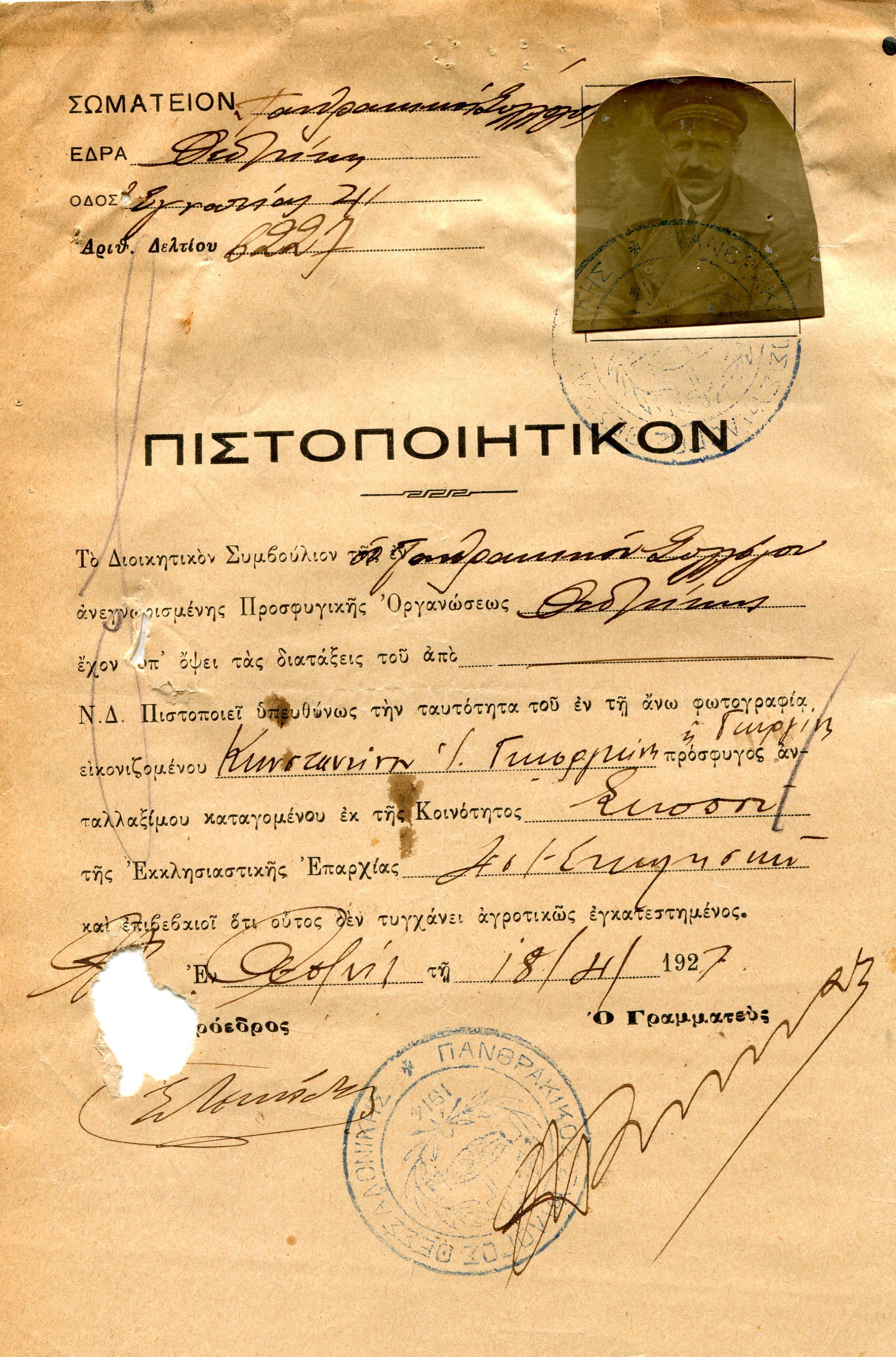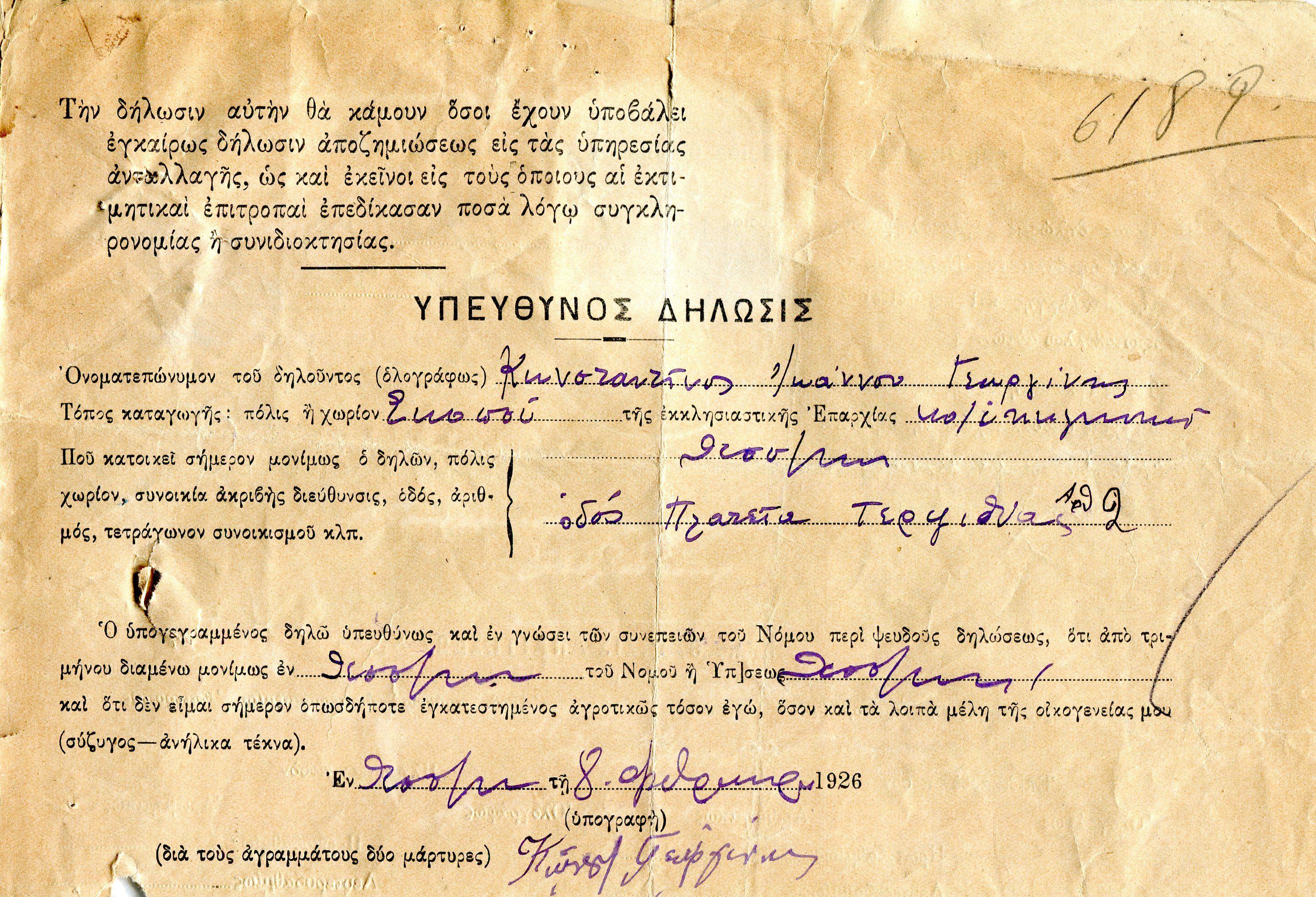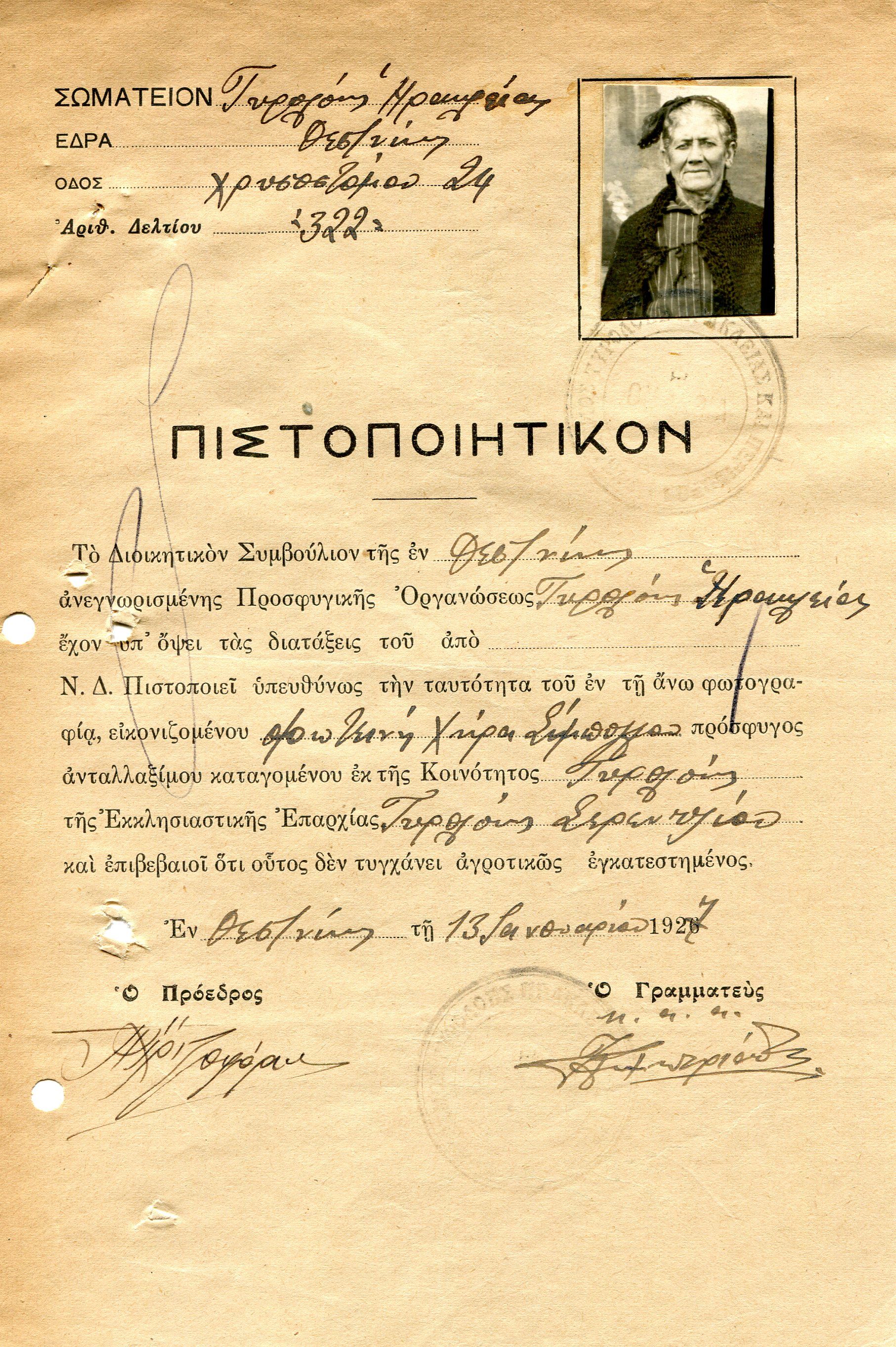Terpsithea Square, Musa Baba, and the refugees. The communist hideaways and Villa Moskoff.
During that time, many Christian refugees settled in the area between Tsinari and Kule Kafe. Several of them, accustomed to engaging in practices of religious syncretism, continued using the türbe as a holy site, identifying Musa Baba with Agios Georgios and, for years, there was a small icon stand on the square dedicated to the Christian saint.
However, there were also demands for the demolition of the monument. Prominent among the protesters was Vasilis Papaioannou, born Vasilis Papagiovanoglou, a refugee from Sungurlu. Papaioannou had settled in a large, luxurious house built by his family right across the türbe. Years later, his son, Odysseas Papaioannou, who lives in this house today, fought for the preservation and restoration of the monument.
The newspaper Efimerida ton Valkanion wrote about Terpsithea Square on May 6, 1933: ‘A little more zigzagging and we find ourselves on Terpsithea Square, a cross between a picturesque enclave and a dream. There are no tekes there anymore, no muezzins or softas or gurgling shishas. Only faint traces remain of the square’s old Turkish character. Surrounded by tidy houses and with a dreamy view sprawling in front of it, it’s as if the square is waiting for someone to renovate it, transform it, beautify it, give it a new lease of life’.
The Musa Baba türbe has had multiple uses over the years. During the military dictatorship (1967-1973), it was used for food storage by the Brave Youth, a division of the Greek Boy Scouts. It also housed the offices of the Olympiakos Terpsitheas Football Club. Today, Terpsithea Square is a meeting point for the people in the neighbourhood and a place where young children can play. The restored türbe is an integral part of the square, but at the same time, for most of the area’s residents and visitors, the monument has been completely removed from the historical circumstances that created it, highlighting the mechanisms which ensure that the past will be silenced even when its traces persist in space.
To the west of Terpsithea Square, on Iasonos Street, stood Villa Moskoff, where the Greek People’s Liberation Army (ELAS) installed its headquarters a few days before the city’s liberation. From quite early on, the refugee population of Ano Poli joined the interwar workers’ movement. Tsinari and Kule Kafe were often described by the press as Communist strongholds and, despite the requisite exaggeration characterising the coverage, the truth was that the tobacco workers’ movement was particularly active in the area and the Communist Party received markedly high percentages there in the elections.
Large swaths of the population of Ano Poli joined the National Liberation Front (EAM) and the Greek resistance during the German occupation. On its eastern side, near the castles, Ioakeim Belidis’ house basement housed the illegal press which printed the newspaper Laiki Foni, an instrument of the Greek Communist Party (KKE) Macedonian Office. The film The Barefoot Battalion by Greg Tallas, based on a true story about a group of barefoot orphan kids who self-organised to survive the occupation, places their hideaway in the area of the Acropolis.
Objects







